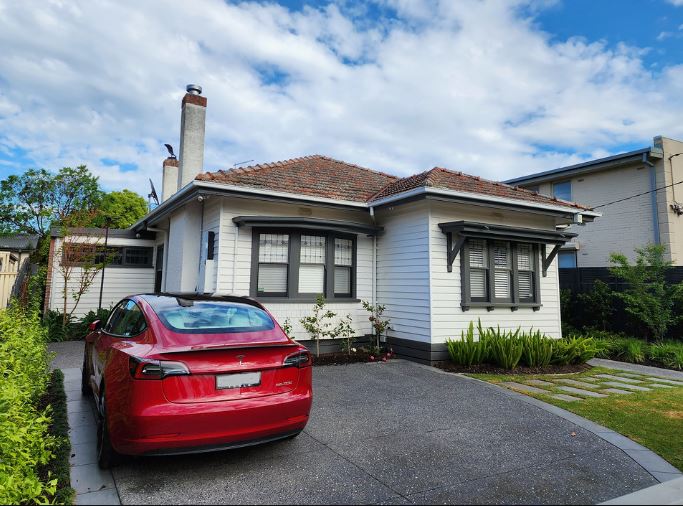 Roof replacement needs a huge cost which requires professional help and choosing the right roofers to complete the work. When your roof has been over 10 years and you found that there is damage on the roof, it is advisable to start budgeting for the costs of roof replacement. However without good knowledge you will be lost in search of the actual costs of roof replacement. And so fundamentally what are the costs that must be considered while trying to replace the roof? Is energy efficient on your mind? It is often calculated that almost 35% of the heating and cooling costs are caused by bad insulation in the roof. If you are considering long-lasting roof, specific materials must be used.
Roof replacement needs a huge cost which requires professional help and choosing the right roofers to complete the work. When your roof has been over 10 years and you found that there is damage on the roof, it is advisable to start budgeting for the costs of roof replacement. However without good knowledge you will be lost in search of the actual costs of roof replacement. And so fundamentally what are the costs that must be considered while trying to replace the roof? Is energy efficient on your mind? It is often calculated that almost 35% of the heating and cooling costs are caused by bad insulation in the roof. If you are considering long-lasting roof, specific materials must be used.

Design and Its Role in Industrial Construction Project
 There are actually some components which are standard in most building construction, i.e. Finance, design, and legal factors. However, with regards to industrial construction, things become much more complex and laws get stricter when compared with home constructions.
There are actually some components which are standard in most building construction, i.e. Finance, design, and legal factors. However, with regards to industrial construction, things become much more complex and laws get stricter when compared with home constructions.
For that reason, architecture engineer must be quite careful when constructing a design. It is more crucial to work for industrial design.

Post-Residential Renovation Cleanup
 Remodeling your home creates a pretty large mess when all is said and done. Even if your contractor or crew of renovators go about the work tidily, there’s still waste, dust and dirt to take care of when the project has concluded. To help, here are a few tips for homeowners on minimizing waste and performing an in-depth post-construction cleanup after your final walkthrough.
Remodeling your home creates a pretty large mess when all is said and done. Even if your contractor or crew of renovators go about the work tidily, there’s still waste, dust and dirt to take care of when the project has concluded. To help, here are a few tips for homeowners on minimizing waste and performing an in-depth post-construction cleanup after your final walkthrough.
First, let’s talk about waste. According to the United States Environmental Protection Agency, home remodeling accounts for 22% of all construction and demolition generated waste. Although much of that waste is from natural materials, some of it could be hazardous to your health, such as brick and drywall dust. Handling these materials should be done with care and may require specialized cleaning equipment.

Tips On Driveway Maintenance And Repair For New Homeowners
 After overcoming the challenge of buying a home, homeowners are occupied with a new assignment: properly maintaining the property. Often, this leads them into unacquainted territory. One example of maintenance that some find challenging is all the upkeep needed for a driveway. To help get the most out of your driveway’s lifespan, let’s go over a few maintenance, upkeep and repair basics.
After overcoming the challenge of buying a home, homeowners are occupied with a new assignment: properly maintaining the property. Often, this leads them into unacquainted territory. One example of maintenance that some find challenging is all the upkeep needed for a driveway. To help get the most out of your driveway’s lifespan, let’s go over a few maintenance, upkeep and repair basics.
First, there are many types of materials used for driveways. Each one has benefits and drawbacks when it comes to maintenance, appearance, environmental impact, etc. To keep things uncomplicated, we’ll go over the top two popular choices: asphalt and concrete. Asphalt, also known as blacktop, is a cost-effective option that’s also quick to install. Although
the lifespan for this material is shorter than others, it can last more than 20 to 25 years when cared for properly. One disadvantage is that, as a petroleum product, asphalt is one of the least environmentally friendly options for a driveway.

House in Multiple Occupation (HMO) Management: A Guide for Landlords in the UK
 Introduction:
Introduction:
As the rental market continues to thrive in the United Kingdom, many landlords are exploring opportunities to maximize their property investments. One such avenue is the House in Multiple Occupation (HMO) market. HMOs are properties rented to three or more tenants who are not from the same household and share common facilities. However, managing an HMO comes with its unique set of challenges and legal obligations. In this blog, we will delve into the world of HMO management in the UK, discussing the essential aspects that every landlord should be aware of. As we do at HMO Management.
-
Understanding HMO Licensing:
First and foremost, landlords need to familiarize themselves with HMO licensing regulations. In England, Wales, and Scotland, certain types of HMOs require mandatory licensing.


